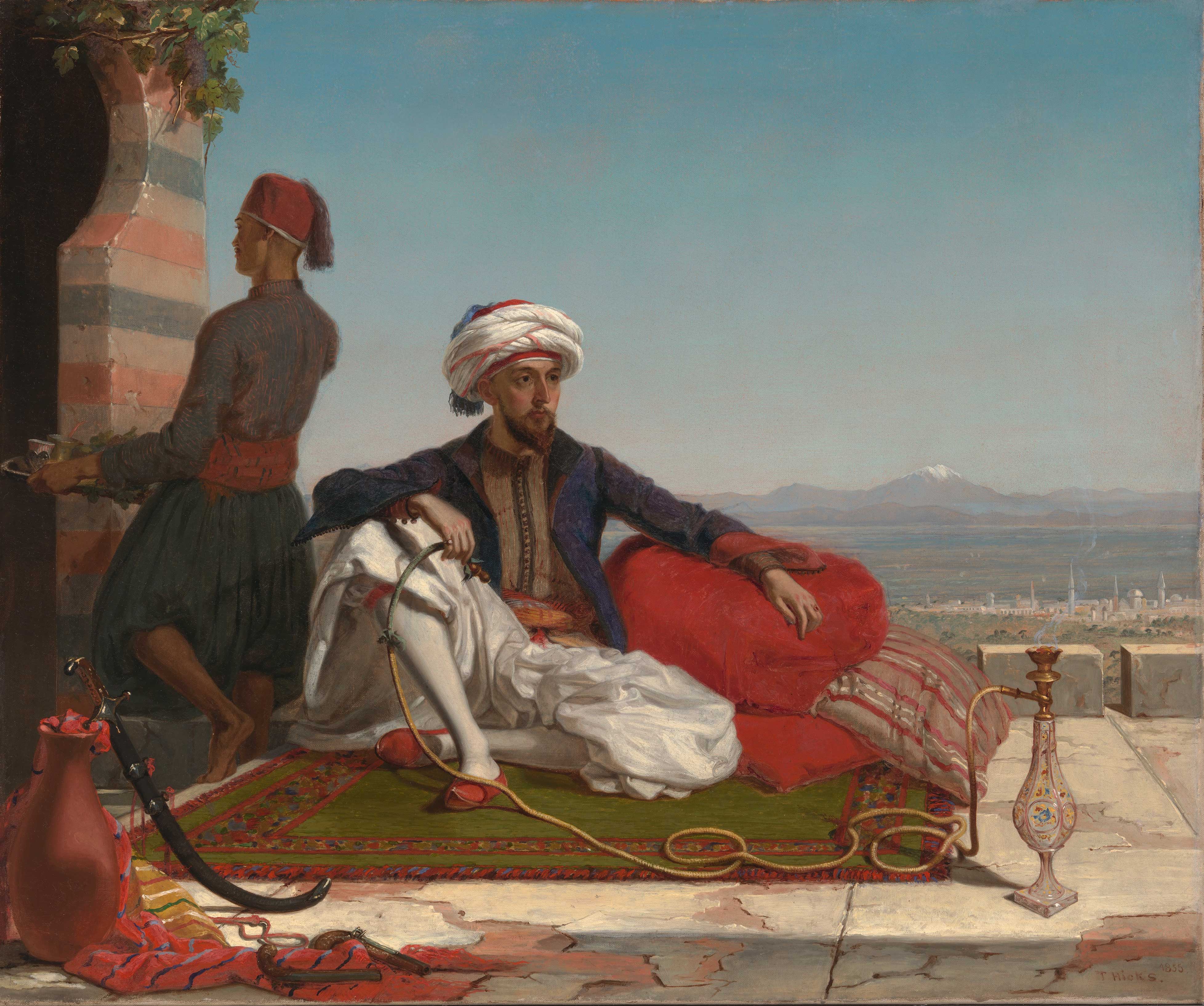The Great American Traveler: Bayard Taylor

Visitors to New York’s National Academy of Design in 1856 would have experienced the shock of recognition when they came upon Thomas Hicks’s painting A Morning in Damascas. Beneath the generic title, most would have recognized the portrait of one of America’s most prominent celebrities, Bayard Taylor.
Taylor had come to national fame over the past decade as a travel writer whose globetrotting exploits in farflung corners of the globe kept newspaper readers on the edge of their seats. Hicks’s painting capitalized on public fascination by representing the handsome, young American adventurer attired in the dress and partaking in the customs of a distant land—the kind of scene Taylor had described on innumerable occasions.
Growing up on a farm in rural Pennsylvania, Taylor had dreamed of a cosmopolitan education and fame as a poet. With scarcely any money in his pockets, he embarked on his first trip to Europe at the age of nineteen and discovered that he could survive by practicing “the strictest economy” and writing up vivid accounts of his adventures for publication in U.S. newspapers. His vividly detailed travel letters proved wildly popular, and after returning to America in 1846, he published a collection under the evocative title, Views A-Foot; or, Europe Seen with Knapsack and Staff. The book went through six editions in just one year, but the success was bittersweet for Taylor. “I am not known to the public as a poet, the only title I covet,” he complained, “but as one who succeeded in seeing Europe with little money.”
For much of his life, Taylor funded his travels to distant parts of the globe by writing sitrring accounts for audiences back home. Casting himself in the role of romantic adventurer, he invited his readers to imaginatively join in his experiences by describing in great detail the unaccustomed foods he ate, scents he smelled, clothing he wore, and dangers he faced. The phenomenal popularity of his travel accounts brought Taylor wide recognition and he burnished his fame to even greater luster by making lecture tours across the country, attracting enthusiastic crowds wherever he went.
With an instinctive savviness about personal promotion, Taylor held his audience’s focus by habitually placing himself at the center of every scene he described. When recounting his travels through Egypt in the early 1850s, for example, he repeatedly itemized the various modes of dress and hairstyle he assumed in order to adapt to his surroundings. Even while describing Achmet, his much-admired Egyptian interpreter and guide, Taylor swiftly redirected attention back to his own appearance, describing a costume not unlike that in the Hicks painting:
I am now wearing one of his [Achmet’s] dresses: a green embroidered jacket, with slashed sleeves; a sort of striped vest, with a row of about thirty buttons from the neck to the waist; a large plaid silk shawl as belt; white stockings and red morocco shoes. I had a pair of trowsers made yesterday to wear while riding camels. They reach from the hips to the knees, and only contain eighteen yards of muslin.
Newspapers across the country transmitted information about Taylor’s fluctuating appearance to an avid readership. His fans read of an alarming change in January 1852 when The Home Journal reported:
A great beauty of our handsome friend Bayard Taylor was his profusely curling and hyacinthine hair, which he has had shaved close to his head, in Egypt, to conform to the usages of the country. Even his acquiline nose will hardly redeem this disfigurement, especially with its white cotton skull-cap.
Relief came two years later when The Home Journal’s announced, “He has come home, with his original type of modesty and poetry, all unchanged—as gentle and romantic looking a Bayard as ever.”
Despite his renown as the “Great American Traveler,” it was fame as a poet—not as a travel writer—that remained Taylor’s main ambition and constant pursuit. It is possible that Hicks’s painting was commissioned, in part, as publicity for Poems of the Orient (1855), a book of poetry inspired by Taylor’s experiences in the Middle East. In contrast to the thunderous ovations that greeted his lectures, Taylor’s poetry was greeted with merely polite applause. Nevertheless, his stature as a poet received official recognition in 1876, America’s centennial year, when he was appointed poet laureate.